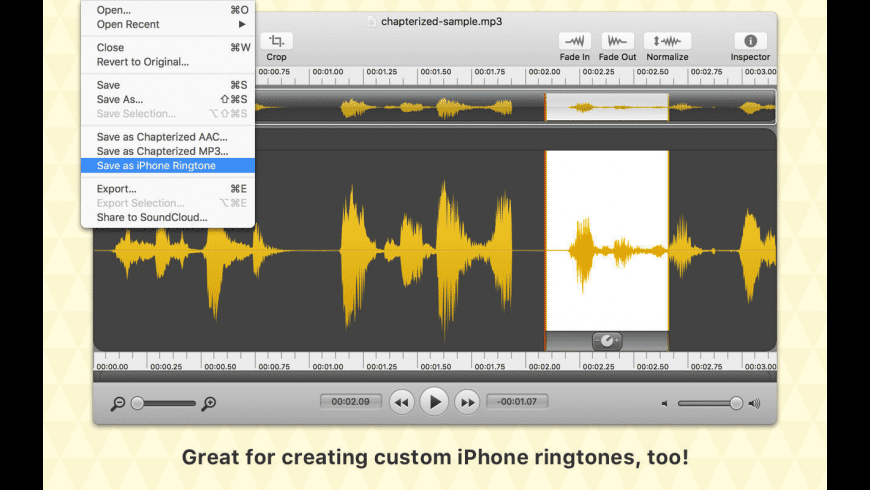

Network radar 2 3 3. Compared to a simpler editor like Fission, TwistedWave includes some more advanced features like professional time stretching and pitch shifting, multi-channel editing for 5.1 and 7.1 files, and support for up to 32 bit audio at 192 kHz.
Full MacOS 10.15 (Catalina) Support
Fission now has full compatibility with MacOS 10.15 (Catalina).
Full Dark Mode Support
Fission now offers full Dark Mode support, using the Dark theme in Dark Mode, and the Light theme in Light Mode. To adjust this setting to your liking, see Fission's Preferences window.
Waveform Improvements
Several improvements have been made to waveform drawing.
Restored Dark Theme Functionality
Recent updates reduced the usefulness of Fission's Dark theme. The theme has now been updated and improved.
A new wizard has been added to Fission, which includes a new “Quick Tour” to provide a helpful overview of the application, as well as update notes on the first launch of a new version.
From Rogue Amoeba Software:
Fission is a streamlined audio editor designed to get you editing in minutes, not hours. It works with MP3, AAC, Apple Lossless and AIFF audio, enabling you to instantly trim and split files with no quality loss. Remove unwanted content, such as commercials, from your audio file. Re-arrange audio in a single file, copy audio from one file to another, or merge with a quick drag and drop.
Find the Fission icon on the dock at the bottom of the Mac window.
Simpleedit 1 600. Once opened, use Finder to locate your WAV file. Drag and drop your file into the Fission window at right labeled 'Drop File Here' or use the 'Open Audio File' option at left.
The WAV file will open and the waveform will display - shown here in yellow. The Waveform is a visual indication of sound along the timeline (above), and makes editing a snap. Blank spaces are portions without sound, and the height of the yellow waveform image indicates the volume. Betterzip 3 1 1 download free. Gaps and peaks in volume are useful indicators for where edits may be needed.
Note the 'Inspector' button at top right - clicking this will show or hide the summary information and labeling tools occupying the right side of the screen.
The Cursor and Playback: The red vertical line in the waveform is the 'cursor' and is the indicator of where playback will begin when you 'play' it. You can always click on the Play, Rewind and Fast-Forward buttons at the bottom to do these things, but skilled editors much prefer to use the keyboard's spacebar to start and stop playback, and manage locations of playback with the mouse instead of using the rewind and fast forward buttons.
Managing View: Fission is a visual tool, so it is important to get a good handle on manipulating the view of content rapidly. Using the mouse to adjust the view can be handled a few ways:
Delete: use the mouse to click and drag across areas of audio that you want to remove and hit delete.
Some suggestions:
Mouse Function: As you move the mouse over (or 'hover' over) different portions of the audio or selected sections, its appearance will change from a plus symbol, to a hand, to a double arrow, which in turn changes what it will do.
The plus symbol is the default, and will allow a rapid selection of where to play with a single click, or with a drag, create a highlighted section to preview or remove. Once a selection is created, the mouse hover over the red cursor will allow you to move it with a click and drag.

After highlighting, you can adjust the boundaries you've set by hovering over until the mouse becomes a
